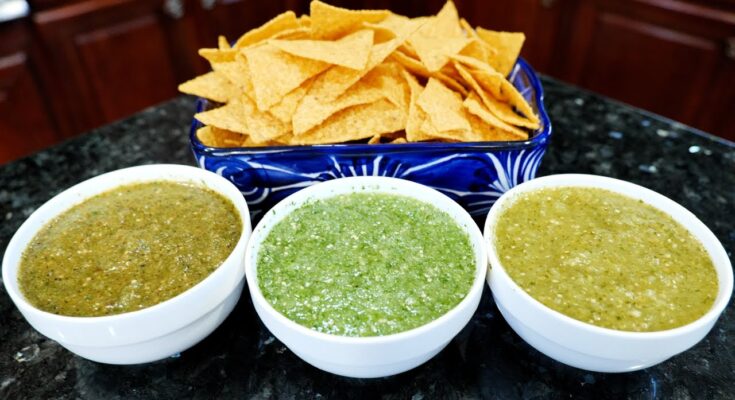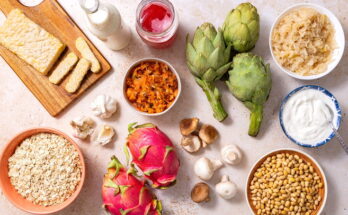Salsa Verde Recipe: Salsa Verde is a vibrant green sauce that originates from Mexican cuisine but has many global variations. Its base usually includes tomatillos, chili peppers, garlic, onion, and cilantro. The bright, tangy flavor makes it versatile, pairing well with countless dishes.
Why Salsa Verde is a Kitchen Staple
Why is Salsa Verde such a favorite? It’s the ultimate multitasker! Use it as a dip, a sauce, or even a marinade. Plus, it’s easy to make, requires minimal ingredients, and delivers a punch of flavor every time.
Ingredients for Salsa Verde
Essential Ingredients
Here’s what you’ll need to make a classic Mexican Salsa Verde:
- Tomatillos: The star ingredient, offering tanginess.
- Chili Peppers: Jalapeños or serranos work best for heat.
- Garlic: Adds depth to the flavor.
- Onion: White onion is traditional.
- Cilantro: A must for that fresh, herby touch.
- Salt: To enhance all the flavors.
- Lime Juice: For a zesty kick.
Variations and Substitutions
- Tomatillos: If unavailable, green tomatoes can be a substitute.
- Chili Peppers: Adjust the type and quantity for your preferred spice level.
- Herbs: Add parsley or basil for a unique twist.
Equipment You’ll Need
Must-Have Tools
- Blender or Food Processor: For blending the ingredients smoothly.
- Knife and Cutting Board: To prepare the vegetables.
- Baking Tray or Cast-Iron Skillet: For roasting.
Optional but Useful Gadgets
- Citrus Juicer: Makes extracting lime juice easier.
- Mortar and Pestle: If you prefer a rustic, chunky texture.
Preparing the Ingredients
Selecting the Freshest Ingredients
Fresh ingredients make all the difference. Look for tomatillos with firm, unblemished husks and peppers that are shiny and smooth. Cilantro should be bright green and fragrant.
Prepping Tomatillos and Peppers
- Tomatillos: Remove the husks and rinse off the sticky residue.
- Chili Peppers: De-seed for less heat, or leave seeds for a spicier kick.
Step-by-Step Guide to Making Salsa Verde
Roasting the Ingredients
Roasting enhances the flavors. Here’s how:
- Preheat your oven to 425°F (220°C).
- Place tomatillos, chili peppers, garlic, and onion on a baking tray.
- Roast for 10-15 minutes, turning halfway, until charred and softened.
Blending to Perfection
Once roasted:
- Add all the roasted ingredients to a blender or food processor.
- Toss in the cilantro, lime juice, and a pinch of salt.
- Blend until smooth or leave it chunky for a rustic style.
Adjusting Seasonings
Taste and adjust:
- Add more salt or lime juice for balance.
- If too spicy, blend in an extra tomatillo or a splash of water.
Tips for the Best Salsa Verde
Balancing Flavors
Creating a perfectly balanced Salsa Verde requires attention to the interplay of tangy, spicy, and salty flavors:
- Tanginess: Tomatillos are naturally tart, but lime juice enhances this flavor. Add it gradually.
- Spiciness: Adjust the number and type of chili peppers to suit your tolerance.
- Saltiness: Start with a small amount of salt and increase as needed to bring out all the flavors.
Storing and Serving Suggestions
- Store your Salsa Verde in a glass jar for best freshness and flavor retention.
- Serve it warm or chilled, depending on the dish. It’s amazing with chips, tacos, and grilled meats.
Common Variations of Salsa Verde
Traditional Mexican Salsa Verde
The classic recipe we’ve been focusing on, Mexican Salsa Verde, highlights tomatillos and chili peppers. It’s the go-to version for tacos, enchiladas, and as a dip for tortilla chips.
Italian Salsa Verde
An entirely different take on the concept, Italian Salsa Verde is made with parsley, capers, anchovies, garlic, and olive oil. It’s typically served with roasted meats or drizzled over fish.
Uses for Salsa Verde
As a Dip
Salsa Verde is perfect for dipping! Pair it with:
- Tortilla chips
- Raw vegetable sticks
- Pita bread
As a Topping
Use it to elevate your dishes:
- Spoon over tacos, burritos, or quesadillas.
- Drizzle onto grilled chicken or fish.
As a Cooking Ingredient
Incorporate Salsa Verde into recipes:
- Use it as a base for green enchiladas.
- Mix it into soups or stews for a burst of flavor.
- Marinate proteins like pork or tofu.
Storing and Preserving Salsa Verde
Refrigeration Tips
- Store Salsa Verde in an airtight container in the refrigerator.
- It will stay fresh for up to a week.
Freezing for Long-Term Storage
- Pour the Salsa Verde into freezer-safe containers or ice cube trays.
- Freeze for up to three months. Defrost in the refrigerator before use.
FAQs About Salsa Verde Recipe
1. What is salsa verde?
Salsa verde is a flavorful green sauce made with fresh ingredients like tomatillos, cilantro, garlic, and lime juice. It is commonly used in Mexican cuisine as a dip, topping, or cooking sauce.
2. What ingredients do I need for salsa verde?
The basic ingredients for salsa verde include tomatillos, fresh cilantro, jalapeños or serrano peppers, garlic, onions, lime juice, and salt. Some variations may also include avocado for a creamy texture.
3. How do I make salsa verde?
To make salsa verde, roast or boil the tomatillos and peppers, then blend them with cilantro, garlic, lime juice, and salt. Adjust the seasoning to taste. This quick process ensures a fresh and tangy flavor.
4. Can I store homemade salsa verde?
Yes, you can store salsa verde in an airtight container in the refrigerator for up to a week. For longer storage, freeze it in small portions for up to three months.
5. What dishes can I serve with salsa verde?
Salsa verde is versatile and pairs well with tacos, enchiladas, grilled meats, roasted vegetables, and even as a dip for tortilla chips.
6. Is salsa verde spicy?
The spiciness of salsa verde depends on the type and amount of peppers used. You can adjust the heat by adding more or fewer jalapeños or serrano peppers based on your preference.
7. Can I make salsa verde without tomatillos?
While tomatillos are a key ingredient, you can substitute green tomatoes or a mix of avocados and lime juice to create a similar green sauce.
Conclusion
Salsa Verde is an incredibly versatile and flavorful sauce that belongs in every kitchen. Whether you’re dipping, topping, or cooking with it, its fresh, tangy, and slightly spicy taste elevates any dish. With this step-by-step guide, you can easily make your own batch and customize it to suit your taste. Why not give it a try today?



